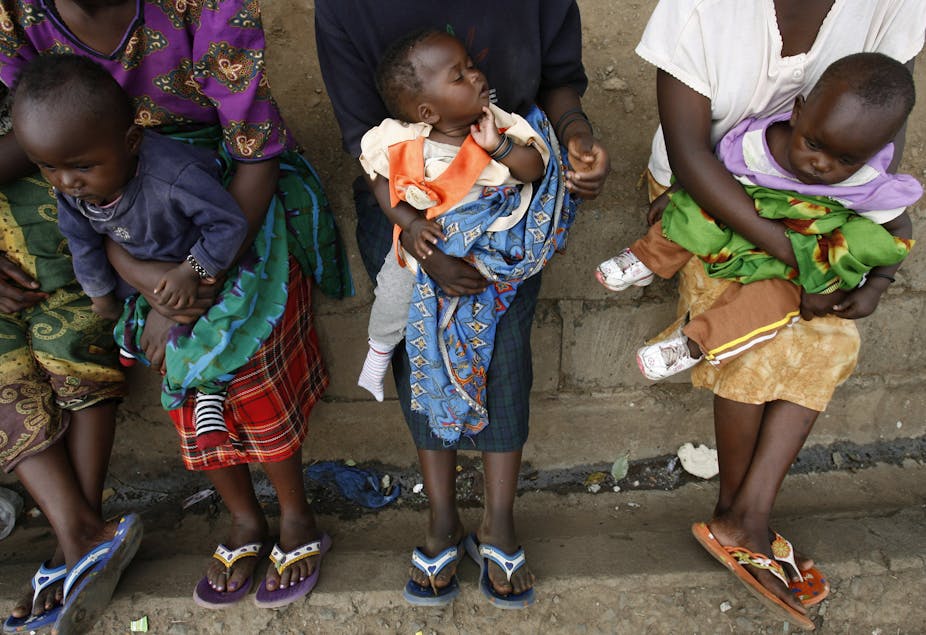In Kenya one in every five girls between 15 and 19 is either pregnant or already a mother. Another study shows that of the women who had severe complications after abortions, 45% were teenagers.
Adolescent sexual behaviour has been the subject of a number of recent discussions in Kenyan print and social media. These discussions have centred on declining moral standards, poor parenting, and a general “blame game” around who bears the responsibility for precocious sexual activity among Kenya’s young people.
The current statistics demand a sober conversation around the sexual and reproductive health needs of young people in Kenya. This is especially true for the most marginalised and vulnerable young people living in Kenya’s urban informal settlements or slums.
Unplanned births and limited information
Research shows young people living in urban slums are at significant risk of early unplanned pregnancies. A study by the African Population and Health Research Centre (APHRC) in 2012 showed, for example, that in Nairobi’s urban slums, 116 girls out of every 1000 girls between 15 and 19 had given birth.
Half of these births were unplanned. And although 50% of the 15 to 19-year-old women had initiated sexual activity, only 35% were using any method of contraception.
High adolescent fertility has far-reaching social, population and public health consequences. Adolescent mothers have poor schooling outcomes. They are also more likely to suffer ill health compared with older women and their children often fare worse than children born to older mothers. Early childbearing also significantly contributes to high fertility levels.
Limited access to sexual and reproductive health information and services is acknowledged as a significant barrier to contraceptive use by adolescents in low- and middle-income settings, such as Kenya.
In a study conducted by the APHRC in 2013, a 16-year old participant reported having an unplanned pregnancy when she was in secondary school. Because of the pregnancy, she dropped out of school and was “chased” from home by her mother. She explained that she knew little about contraception:
I don’t know about family planning. Maybe had I known about them I don’t think I would have gotten pregnant … You just hear they are there but they are for adults.
Her story is familiar.
Young people need comprehensive sexuality education
The moral debates around adolescents’ sexual behaviour are counterproductive for two reasons. First, irrespective of cultural or religious background, young people need to be knowledgeable about issues that affect their health. This would help them make well-informed decisions in their youth and later life.
They need age-appropriate, comprehensive education on sexuality or scientifically correct information about:
the human anatomy and physiology and pregnancy;
contraception and sexually transmitted infections;
cultural norms and interpersonal relationships; and
other social issues that can affect human sexual and reproductive behaviour.
The Kenyan Health Ministry has launched the National Adolescent Sexual and Reproductive Health Policy. The policy highlights the need for young people to access age-appropriate comprehensive education about sexuality. It also underscores how vulnerable the rapidly growing population of young slum dwellers are and the need for urgent action to address their plight.
The debate should now centre on how we can empower teachers, parents, religious leaders and healthcare providers to ensure that every adolescent is supported to make informed decisions about his or her sexual and reproductive health.
Second, most adults would agree that every person, irrespective of age, has the right to access quality health services. Yet, young people face significant barriers in accessing health services. These barriers range from fear of mistreatment to inconvenient operating hours and the lack of healthcare staff with specialised training to meet the needs of adolescents.
The services need to change
A recent review on adolescent sexual and reproductive health by Venkatraman Chandra-Mouli of the World Health Organisation and colleagues outlines four key ingredients that could improve young people’s use of sexual and reproductive health services:
healthcare providers must be trained and supported to provide adolescent-friendly services;
health facilities must be welcoming and appealing to adolescents;
young people must be informed of the available health services and encouraged to use them; and
communities must support the government to provide adolescents with these services.
The current debates should centre on ways to promote access to quality health services. This includes sexual and reproductive health services for all Kenyans, irrespective of age.
As Kenya prepares a national response to implement the 2030 agenda for sustainable development it must make substantial investments in sexual and reproductive health programmes. This will ensure every young woman is fully supported to make decisions that will ensure their sexual and reproductive health.

